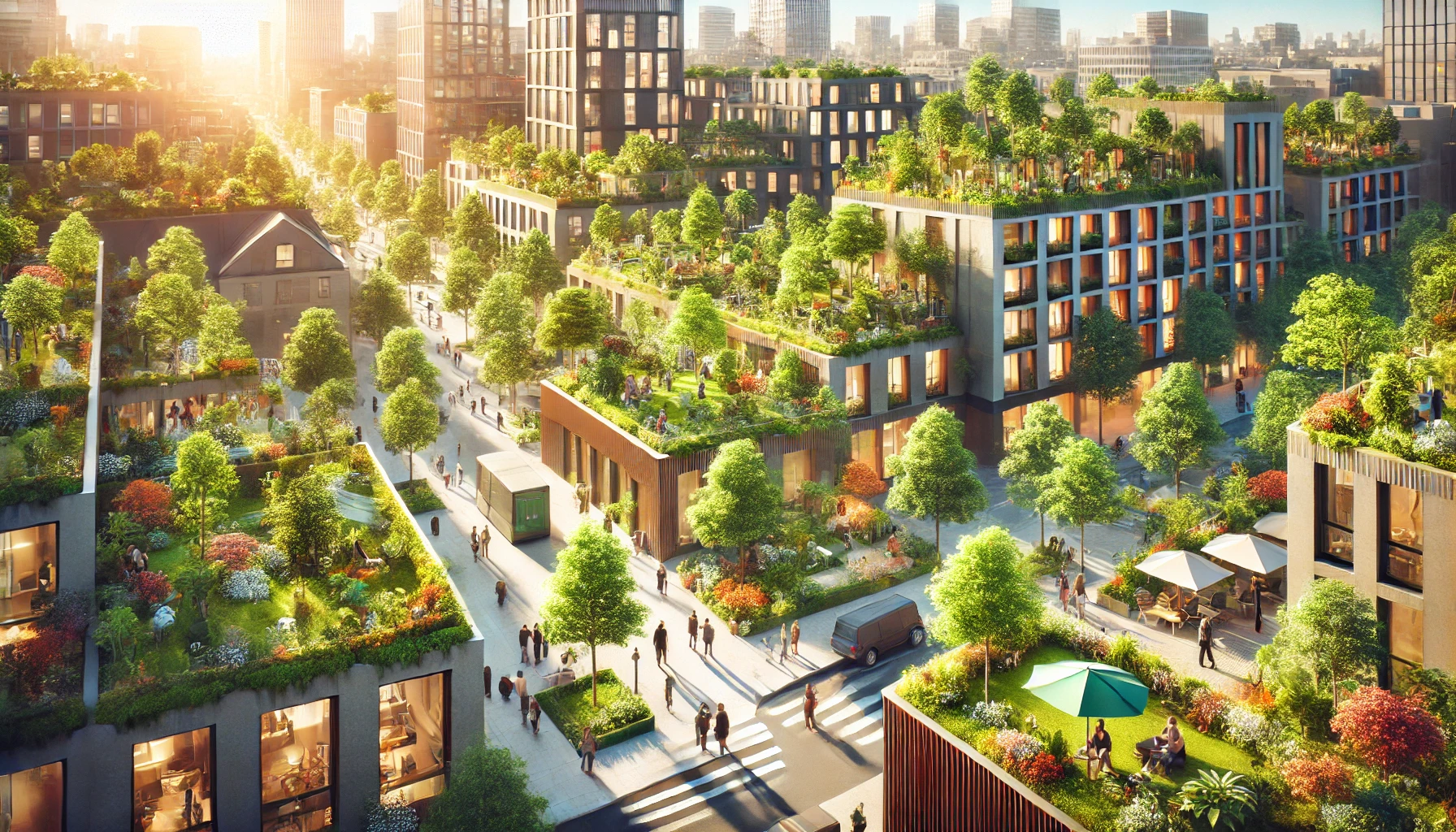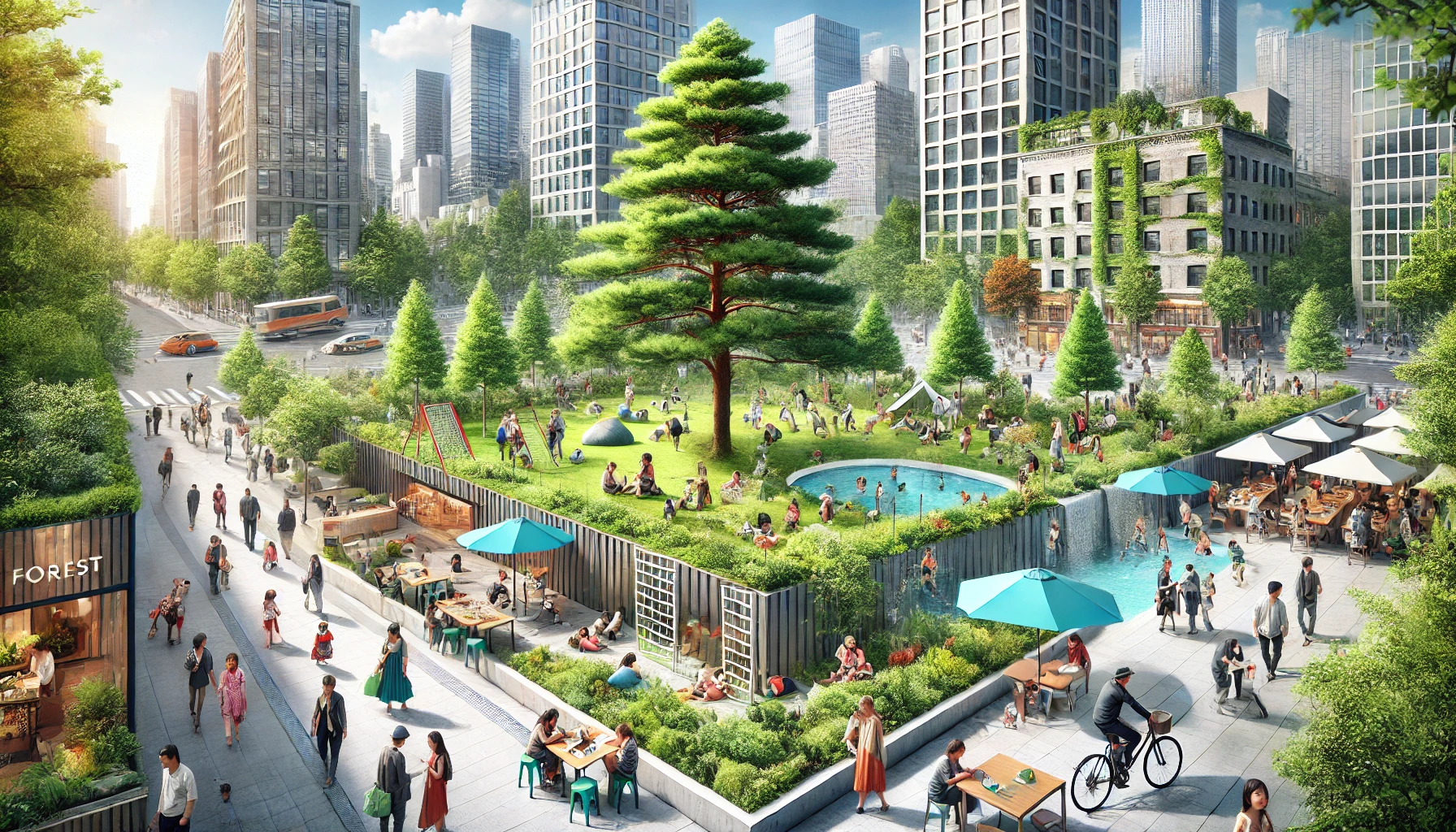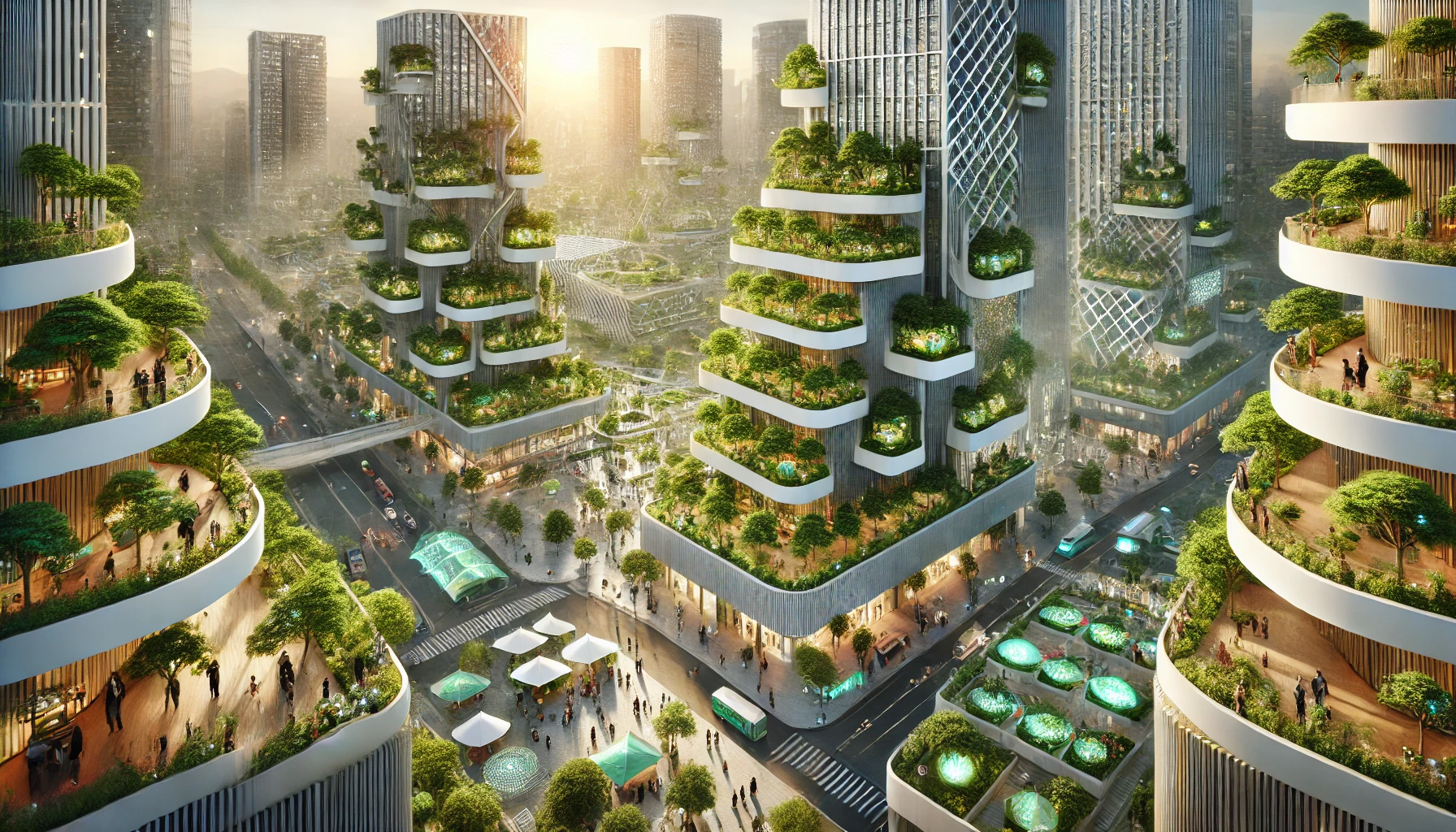
Urban areas around the world are grappling with several environmental challenges, including air pollution, climate change, and a lack of green spaces. As cities continue to expand, finding innovative solutions to enhance the urban environment has become more critical than ever. One such solution gaining momentum is the concept of tiny forests—small, yet highly effective, green spaces that bring the benefits of nature into urban areas. These mini forests are not just a trend but a practical and sustainable approach to improving biodiversity, combating climate change, and enhancing the quality of life in densely populated areas.
In this blog post, we will explore what tiny forests are, how the Miyawaki method has inspired the planting of these forests in urban environments, the benefits of native species in urban spaces, and the potential of these small green spaces to make a big impact on our cities’ future.
What Are Tiny Forests?
Tiny forests, also known as mini forests, are small patches of land planted densely with native trees and shrubs, designed to replicate the structure and ecology of a natural forest. Unlike traditional parks or tree-lined streets, these urban forests aim to create a self-sufficient ecosystem that fosters biodiversity and offers numerous environmental, social, and health benefits.
The idea behind tiny forests is to introduce diverse plant life into urban areas, where green spaces are often limited. These small forests are typically planted on vacant lots, unused urban spaces, or underutilized land, and they require minimal maintenance once established.
1. The Miyawaki Method
The concept of tiny forests as we know them today was popularized by Akira Miyawaki, a Japanese botanist, who developed a highly effective technique for growing dense, multi-layered forests in urban spaces. The Miyawaki method focuses on planting a diverse mix of native species, using the natural forest’s layers—such as trees, shrubs, and ground cover—to mimic the ecology of a native forest.
Key features of the Miyawaki method include:
-
Planting native species: Using native trees and plants that are well-suited to the local environment. These species have evolved to thrive in the specific soil, climate, and weather conditions of the area.
-
High-density planting: Trees and plants are planted very close together, creating a dense, layered forest. This increases the chances of survival and promotes biodiversity by providing varied habitats for insects, birds, and other wildlife.
-
Minimal maintenance: Once established, a Miyawaki forest requires very little intervention. The forest becomes self-sustaining and resilient, with trees and plants forming a natural, balanced ecosystem.
-
Example: In Tokyo, Miyawaki’s method has been used to create mini forests in urban neighborhoods, providing residents with small, lush green spaces that contribute to biodiversity, reduce urban heat islands, and promote community engagement.
The Miyawaki method has since been adapted in many parts of the world, from Europe to South America, and has proven to be an effective solution to restore natural forests in areas where traditional reforestation efforts might be too expensive or impractical.
The Environmental Benefits of Tiny Forests
Tiny forests provide a wide range of environmental benefits that contribute to the overall health and resilience of urban environments. These mini forests play a crucial role in mitigating climate change, enhancing biodiversity, and improving the quality of life for urban dwellers.
1. Improving Air Quality and Reducing Pollution
Urban areas are often plagued by air pollution caused by emissions from vehicles, factories, and other human activities. Tiny forests help to combat this issue by absorbing carbon dioxide (CO2) and releasing oxygen, acting as natural air purifiers.
-
Trees in urban forests capture air pollutants like nitrogen oxides and particulate matter, which can have harmful effects on human health.
-
Example: In Paris, the creation of small, densely planted urban forests has helped improve air quality and reduce the concentration of harmful pollutants in the city.
By incorporating native trees and plants into urban areas, tiny forests become essential in combating air pollution and improving public health.
2. Combating Climate Change and Reducing Carbon Footprint
Tiny forests help in the battle against climate change by acting as carbon sinks. Trees absorb carbon dioxide during photosynthesis, reducing the amount of greenhouse gases in the atmosphere and helping to slow down global warming. Although the scale of tiny forests may seem small compared to larger forest areas, their impact is significant when integrated into urban spaces.
-
Example: The City of Melbourne has implemented several tiny forest initiatives that have been successful in reducing the city’s carbon emissions and improving the urban environment.
These efforts play a key role in the climate action movement, where every step toward reducing carbon emissions counts.
3. Biodiversity Enhancement
Urban areas often lack the biodiversity found in rural or natural environments, leading to a loss of wildlife and important plant species. Tiny forests support biodiversity by providing habitats for a variety of species, including birds, insects, and small mammals. These mini forests create opportunities for wildlife to thrive and interact in ways that would not be possible in conventional urban green spaces.
-
Example: A Miyawaki forest in India has been shown to attract a diverse range of species, from birds to insects, enhancing the overall ecological health of the area.
By promoting a variety of native species, tiny forests help restore ecological balance in urban environments and provide much-needed spaces for urban wildlife.
4. Flood Control and Soil Erosion Prevention
In cities with poor drainage systems or a history of flooding, tiny forests can serve as natural solutions to manage stormwater runoff. The roots of native trees help absorb rainwater and prevent soil erosion, reducing the risk of floods and maintaining the integrity of urban landscapes.
-
Example: A tiny forest in Tokyo helps manage rainwater runoff, reducing the risk of urban flooding and ensuring that water is absorbed into the ground rather than running off into drains.
By preventing soil erosion and managing stormwater, these small green spaces contribute to the overall environmental resilience of urban areas.
The Social and Economic Impact of Tiny Forests
Beyond the environmental benefits, tiny forests also provide social and economic advantages for urban communities. These forests improve the quality of life, foster community engagement, and offer educational opportunities.

1. Improving Quality of Life and Public Health
The presence of green spaces in urban areas has been shown to improve mental health and well-being by offering residents places to relax, exercise, and connect with nature. Tiny forests provide an intimate setting where people can escape from the hustle and bustle of city life and enjoy the therapeutic effects of spending time in nature.
-
Example: In Germany, small Miyawaki forests have become popular meeting spots for local residents to engage in outdoor activities, yoga, and mindfulness practices.
Additionally, these mini forests can help reduce the urban heat island effect by providing shade and cooling the surrounding environment, making the area more comfortable and livable.
2. Community Engagement and Education
Creating tiny forests offers opportunities for community involvement, volunteerism, and environmental education. Many of these projects are organized by local communities, schools, and organizations, bringing people together to plant trees and learn about sustainability. This fosters a sense of ownership and responsibility toward the environment and encourages residents to actively participate in environmental conservation.
-
Example: In New York City, local residents participate in the Million Trees NYC initiative, where thousands of native trees have been planted throughout the city’s neighborhoods, fostering community spirit and increasing environmental awareness.
By involving local residents in the planting and maintenance of these forests, tiny forest projects help build stronger, more environmentally conscious communities.
3. Economic Benefits and Job Creation
Tiny forests can also have positive economic impacts, especially in urban areas where space is limited and property values are high. By creating green spaces that are aesthetically pleasing and contribute to public health, these forests can increase the value of surrounding properties. Additionally, the creation and maintenance of tiny forests create jobs in landscaping, forestry, and urban planning.
-
Example: In Brazil, the development of urban forests has helped revitalize neglected neighborhoods, attracting tourists and boosting local businesses. The projects also create jobs for local residents, contributing to the local economy.
By improving the economic vitality of neighborhoods and creating jobs, tiny forests contribute to sustainable urban development.
The Future of Tiny Forests in Urban Areas

As urban populations grow and environmental challenges become more urgent, the role of tiny forests in transforming urban spaces will continue to expand. With the global focus shifting toward sustainable practices, climate change mitigation, and biodiversity conservation, tiny forests represent a vital tool in addressing these issues in cities worldwide.
Through continued innovation and widespread adoption of the Miyawaki method and other forest planting techniques, tiny forests can become a central component of urban green infrastructure. These forests not only help combat air pollution, reduce carbon emissions, and promote biodiversity, but they also provide communities with healthier, more connected spaces.
By investing in and nurturing these mini forests, we can ensure that future generations live in cities that are not only more environmentally sustainable but also more livable, resilient, and connected to nature. Tiny forests are a testament to the power of small actions that can make a big difference in the fight for a sustainable future.
Conclusion

Tiny forests are more than just small patches of greenery; they represent a powerful, scalable solution to some of the most pressing environmental and social challenges facing urban areas today. By integrating these mini forests into city landscapes, we can make meaningful strides in improving air quality, combating climate change, and fostering biodiversity—all while enhancing the well-being of urban communities.
The success of tiny forests around the world demonstrates that even the smallest green spaces can create a lasting impact. As more cities embrace this concept, collaboration between local governments, environmental organizations, and community groups will be crucial in expanding their reach. By prioritizing sustainable urban development and investing in nature-based solutions, we can create healthier, greener, and more resilient cities for future generations.
Tiny forests remind us that urban sustainability is not just about large-scale infrastructure projects—it’s about thoughtful, innovative approaches that bring people and nature closer together. In an increasingly urbanized world, these small but mighty forests are a beacon of hope, proving that even in the most densely populated areas, nature can thrive, and so can we.
